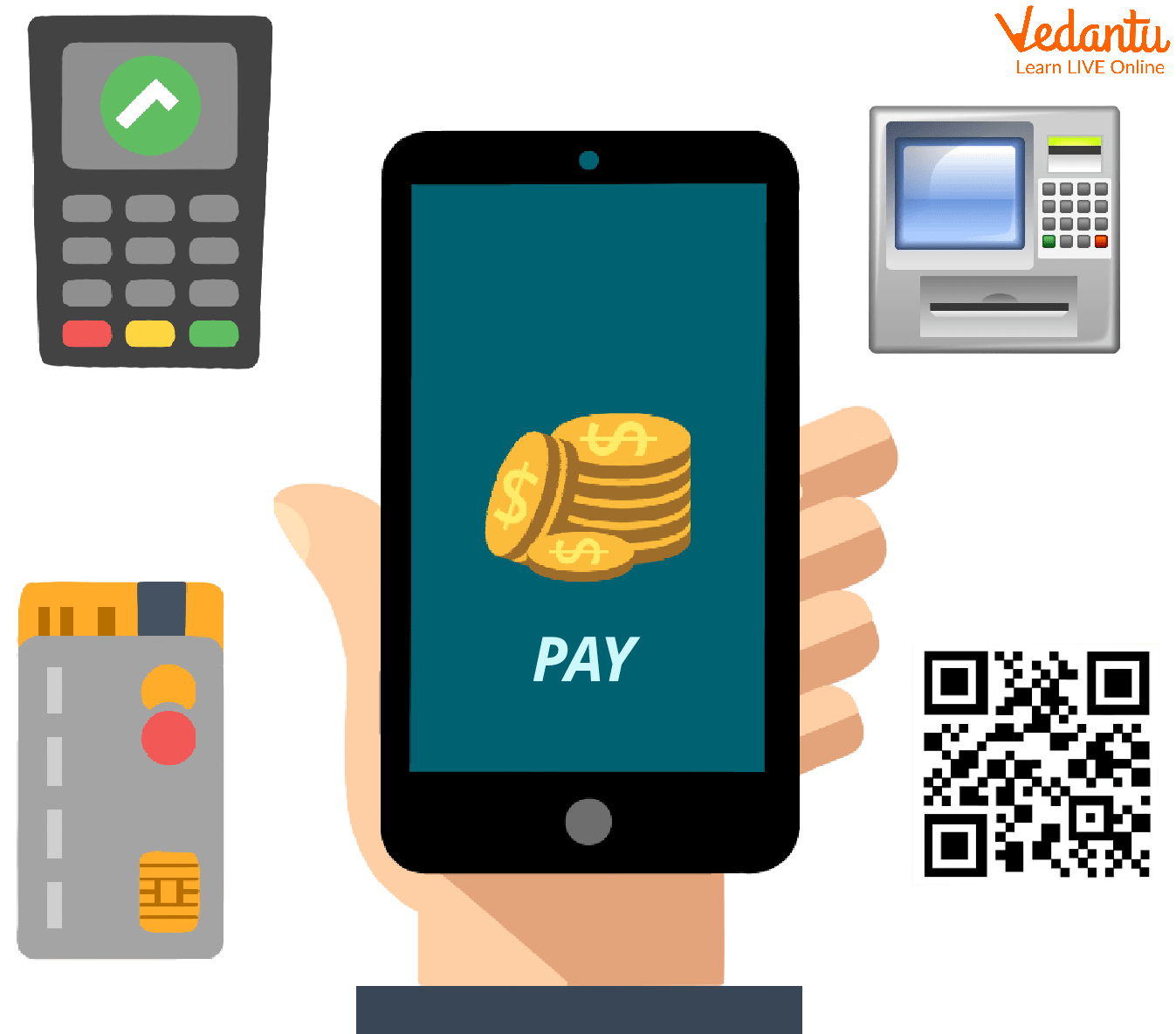




What are National Payment Systems?

Defining National Payment System
The national payment system is a crucial part of every country's economic infrastructure since it is the means through which consumers and businesses exchange money and financial services. Significant improvements have been made to the design of large-value, consumer, and securities payment networks, as well as the operations and processes carried out by operators, managers, regulators, and users of the systems, as a result of global economic liberalisation and advances in information technology.
There are several nations where the central bank bears a disproportionate share of the blame for the security of the national payment system. This article will offer a general review of monetary payment systems as well as the function that these systems serve within the contemporary international financial system.
Defining Payment Systems in Detail

Meaning of the Payment System in Detail
The term "national payment system" refers to the set of institutions and the underlying infrastructure of technology-driven procedures and practices that work together to streamline the movement of money and goods between buyers and sellers. The evolution of a nation's communications and technological infrastructure, as well as its banking and financial infrastructure, are reflected in its payment system.
Like any other industry, the market for payment system services is driven by supply and demand. On the demand side, customers want convenient access to a wide range of payment options, from wire transfers between financial institutions to retail credit instrument purchases made at the point of sale using plastic cards such as credit and debit cards.
Low transaction costs, system compatibility, security, privacy, and legal protection are highly valued by users. On the supply side, payment services generate income for banks and other financial institutions while expanding customer bases for businesses offering IT and telecom services.
The Payments System's Efficiency

The Efficiency of Adapting the Payment System
Australia's central bank was one of the first in the world to have payment system efficiency as a legislative goal. To fulfil this duty, the Reserve Bank has pushed for faster check-clearing times, increased direct debits as a bill payment method, and taken other measures to make card systems more competitive and efficient. As for the latter, initially, it was all about credit card processing. However, with the Payment Systems (Regulation) Act in 2001, the Bank recognised the Bankcard, Mastercard, and Visa credit card networks as payment systems.
The designation of a payment system is the first stage of establishing standards and an access regime. The bank, after significant consultation, established standards for the selected schemes, which reduced interchange fees, lifted prohibitions on retailers charging consumers for the acceptance of credit cards and enforced an Access Regime that encourages entrance by new participants. With the evolution of the card payment system, the bank has enacted further changes to increase competitiveness and efficiency.
There have been changes made to interchange fee regulation, such as the expansion of interchange fee regulation to debit and prepaid card systems and the introduction of interchange fee caps on individual interchange fees, as well as the elimination of restrictions requiring businesses to take the credit cards of a scheme unless those who accept that scheme's debit cards and vice versa.
E-payment Case Study
Every nation has a financial system that supports its growth. A financial system mobilises excess funds from surplus units and transfers them to deficit spenders. Any country's financial system includes banking and nonbanking institutions that provide different financial services. Clearing and money transfer are the most crucial financial services. Payment systems boost financial transparency, corporate development, and consumption.
The banking system's success relies on the industry's clearing mechanism. If we ignore technical developments, this system has changed globally. In recent years, ICT has improved the global financial system. Most banks and financial institutions in India provide ICT-based financial products and services to increase business efficiency and speed, such as e-banking, internet banking, electronic cash transfer, electronic clearing, mobile banking, etc.
Conclusion
The stability of the international monetary system depends on the reliability of national payment systems. However, due to advancements in technology and widespread internet access, there are now many options for making non-cash electronic transactions between people anywhere around the globe.
Many retail, high-value, and securities settlement systems make up a country's payment infrastructure. In addition, these systems will connect to other nations' infrastructures through various linking platforms and correspondent relationships. The payment system is of paramount importance to central banks and other vital institutions in the financial sector because the actualisation of risk, such as a party defaulting on a significant value transaction, can spread throughout and threaten the system's integrity.
FAQs on National Payment Systems Overview
1. What is a National Payment System (NPS)?
A National Payment System (NPS) is a framework of rules, institutions, and technical mechanisms that enables the transfer of money within a country. It acts as the backbone of a nation's financial infrastructure, facilitating transactions between consumers, businesses, and government bodies. In India, this system is primarily managed by the Reserve Bank of India (RBI) and the National Payments Corporation of India (NPCI).
2. Why is a robust National Payment System important for a country's economy?
A robust National Payment System is crucial for an economy for several reasons:
Economic Efficiency: It ensures smooth and rapid circulation of money, which is essential for trade and commerce.
Financial Stability: A secure and reliable system prevents financial shocks and builds trust in the banking system.
Financial Inclusion: It provides accessible payment options to a larger section of the population, bringing more people into the formal economy.
Policy Implementation: It allows the government to efficiently disburse funds for welfare schemes, such as through Direct Benefit Transfer (DBT).
3. What is the role of the National Payments Corporation of India (NPCI)?
The National Payments Corporation of India (NPCI) is an umbrella organisation for operating retail payments and settlement systems in India. It was established by the RBI and the Indian Banks' Association (IBA). Its primary role is to innovate and manage various payment systems to make them more efficient, secure, and accessible. It operates popular platforms like UPI, IMPS, RuPay, and Bharat BillPay.
4. What are some key examples of payment systems operating under India's NPS?
India's National Payment System includes several key systems, such as:
Unified Payments Interface (UPI): An instant real-time payment system for inter-bank transactions through a mobile platform.
Immediate Payment Service (IMPS): A 24/7 instant fund transfer service available through mobile phones and internet banking.
National Electronic Funds Transfer (NEFT): A nationwide payment system for one-to-one fund transfers, which operates in half-hourly batches.
Real-Time Gross Settlement (RTGS): A system for continuous, real-time settlement of large-value fund transfers individually.
RuPay: India’s indigenous domestic card scheme for debit and credit cards.
5. What is the difference between RTGS, NEFT, and IMPS?
The main differences lie in their settlement mechanism, transaction limits, and operational timings:
Settlement Type: RTGS settles transactions individually and in real-time (gross settlement). NEFT settles transactions in batches (net settlement). IMPS is an immediate, real-time system available 24/7.
Transaction Value: RTGS is typically used for high-value transactions, with a minimum limit of ₹2 lakh. NEFT and IMPS have no minimum limit but have upper limits set by individual banks.
Speed: IMPS and RTGS are the fastest, providing near-instantaneous transfers. NEFT can take up to a few hours as it is processed in batches.
6. How are the payment systems in India regulated?
The payment and settlement systems in India are regulated by the Reserve Bank of India (RBI) under the Payment and Settlement Systems Act, 2007 (PSS Act). The RBI sets the policies, standards, and guidelines for all payment systems to ensure they are safe, secure, efficient, and accessible. The PSS Act gives the RBI the authority to authorise, prescribe policies for, and regulate all payment systems in the country.
7. What is the difference between a 'payment' and a 'settlement' in the context of financial systems?
While often used together, 'payment' and 'settlement' are two distinct stages of a transaction. A payment is the process of transmitting instructions to transfer value from one party (payer) to another (payee). A settlement is the final and irrevocable act of discharging the obligation, where the actual transfer of funds between the banks of the payer and payee takes place. For example, when you swipe your card, the payment instruction is initiated instantly, but the settlement of funds between the banks might happen at a later time.
8. How do modern digital payment systems like UPI promote financial inclusion?
Modern digital payment systems like UPI significantly promote financial inclusion by making banking services more accessible and affordable. They allow individuals, even in remote areas, to perform transactions using just a smartphone and a bank account, reducing the reliance on physical bank branches. The low transaction cost, ease of use (with mobile numbers or QR codes), and 24/7 availability encourage small merchants and the unbanked population to join the formal financial ecosystem, fostering economic growth and empowerment.























